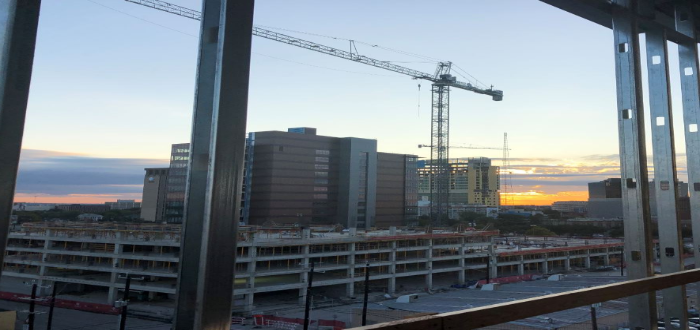Raub Report: Summer Days of Covid
August 3, 2020

Green Street Advisors, the premier commercial real estate analysis firm, covers properties across the globe. They are highly respected for their depth of analysis and breadth of coverage. Their best estimate on impact that the Days of Covid have had on commercial real estate across the board is a reduction in value of about 10 to 11%. Now this is an average with some property types being off much more, like hotels, but then others possibly increasing a little, like data centers, cell towers and mobile home parks. One expert said that Cap Rates will remain constant, because of the historically low interest rates, however, Net Operating Incomes will go down because rent collections are uncertain and tenant leases are stressed. So, then, the Same Cap Rate X Lower NOI = Lower Values.
An Influx of Renters
Zumper is a website that helps folks lease apartments and homes across the U.S.A. So, naturally it is a good resource for learning where people are moving from and moving to. They recently reported that San Antonio is the #3 most searched city in the nation for inbound inquiries. So, lots of folks are thinking about moving to San Antonio and will need an apartment to rent. Certainly, a great sign for our economy. Guess where the most inquiries are coming from? Austin. Naturally, people want to move close to where they are already living. Seems likely. But could this be that Austin has gotten so expensive, that San Antonio looks like a good deal? And you can stay in the same South Texas ambiance? With so many telecommuting, maybe renting in San Antonio and making the weekly or so trip up I-35 makes sense? Of course, the most interest in Austin comes from San Antonio, so don’t jump to too many conclusions.
San Antonio Real Estate Development
The 2010’s was the Decade of Under-building, according to Hoya Capital Real Estate. Single family starts are running only half of what they were in the 1980’s, ‘90’s and 2000’s, while multifamily starts have recovered to about the rate where they were in the 1990’s, having taken a huge hit in 2009-2011. The result is that the U.S. has not built enough new homes over the past decade. Hoya says this has led to persistently higher housing price inflation, more expensive homes, less affordability and greater disparity of wealth creation throughout the population. Owning your own home is widely regarded as the safest investment you can make and has been the major source of wealth creation for Baby Boomers. It is truly the American Dream but the Great Recession ruined it. The Wall Street Journal said: “the housing crash wiped away a lot of wealth …People born in the 1970’s were hit especially hard.” Now, those earning the median income can’t afford the median priced home. According to census data, between 2007 and 2017, the United States added less than 1 million households in owner-occupied homes, but 6.5 million in renter-occupied homes. Starting with the huge number of foreclosures from the housing crash, private equity investors began creating huge portfolios of rent homes. Then, this led to the creation of REITs owning hundreds of thousands of rent homes and now even having new homes built to rent. Rent houses rose from 34 million in 2006 to 43 million now. The percent of home-ownership peaked at 69% in 2005, then dipped to 63% in 2016 but recovered to 65% now, with the other 35% as renters. The Millennial’s are now shifting to buyers, as they form families, albeit, later in life than previous generations. And very likely the Days of Covid will accelerate the desire to move out of crowded center cites to the roomier and more child friendly suburbs. Bottom line, the housing industry will remain on a solid track for many years to come.
San Antonio Housing Market
In S.A. new home sales are booming, up 13.8% in June vs. June ’19. And interest rates are dropping below 3%. Days on Market average about 85 days. All good signs for our local economy.
Be sure to check out our blog at dhnpsf.com/commercial-real-estate-blog.

